
Nike
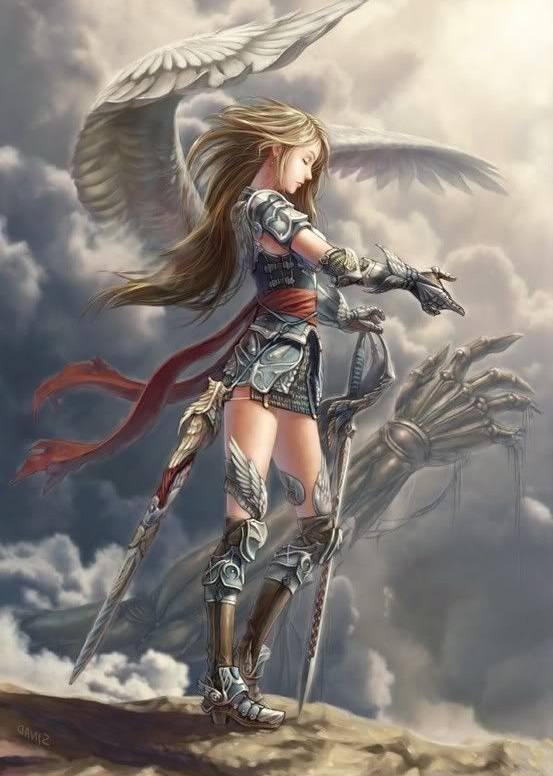
In ancient Greek civilization, Nike (Ancient Greek: Νίκη, lit. 'victory') was a goddess who personified victory. Her Roman equivalent was Victoria.
Nike was a goddess from the ancient Greek pantheon, and although not one of the major deities, Nike was still an important figure who represented Victory to the ancient Greeks.
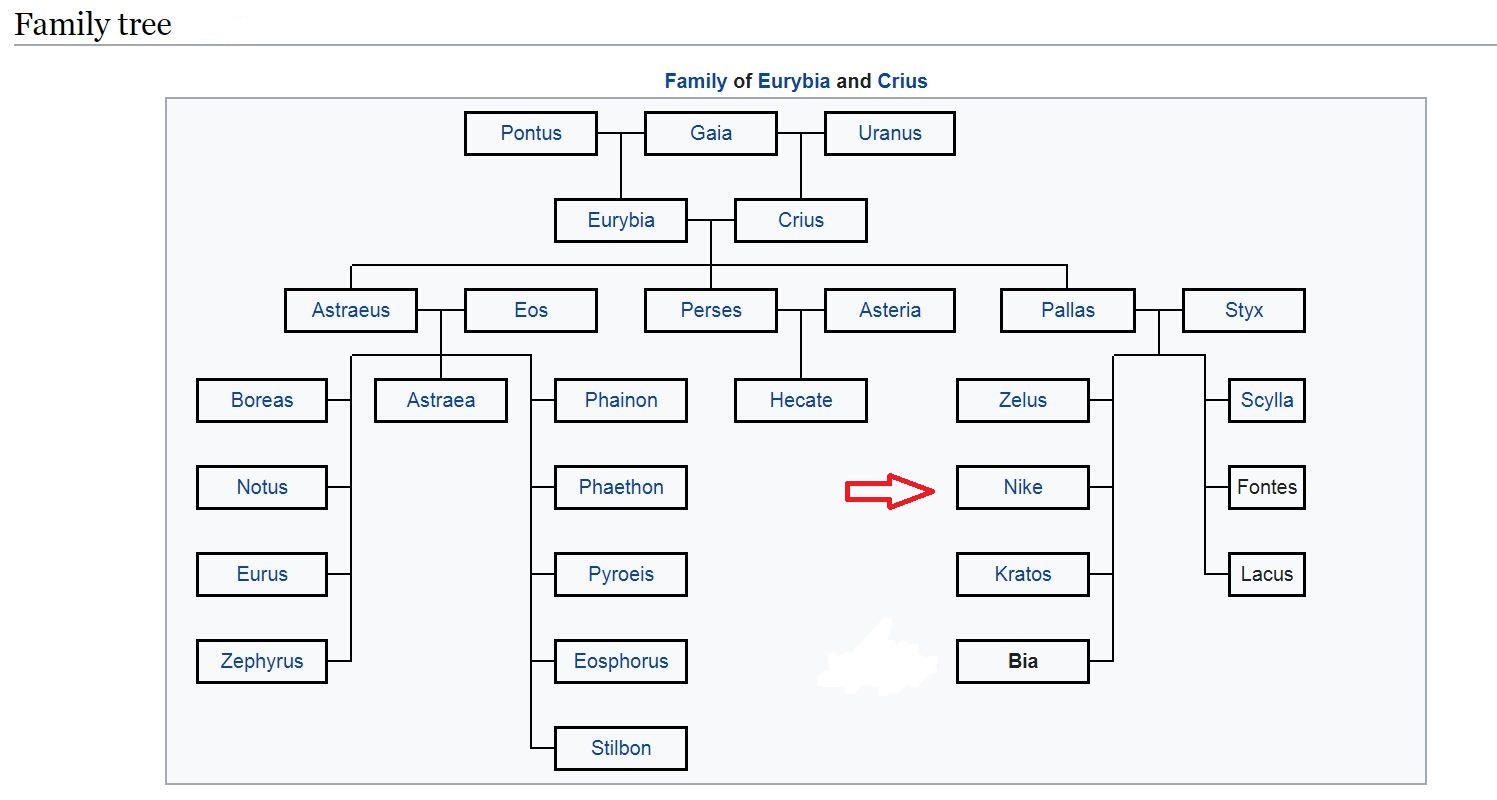
NIKE DAUGHTER OF STYX
The goddess Nike was the daughter of the second generation Titan Pallas, Pallas was the early Greek god of Battle, and the Oceanid Styx. Thus Nike was also sibling to Zelos (Zeal), Bia (Force) and Cratus (Strength).
Nike’s name means Victory, and the Roman equivalent of Nike was Victoria.
As the Greek goddess of Victory, Nike was closely associated with athletics and other contests, as well as warfare. Thus Nike was normally depicted as a beautiful woman, with a lyre in hand, to celebrate victory, a wreath, to crown a victor, and a bowl and cup for libations to honour the gods.
To this end, the name of Nike was invoked by successful contestants as well as victorious generals.
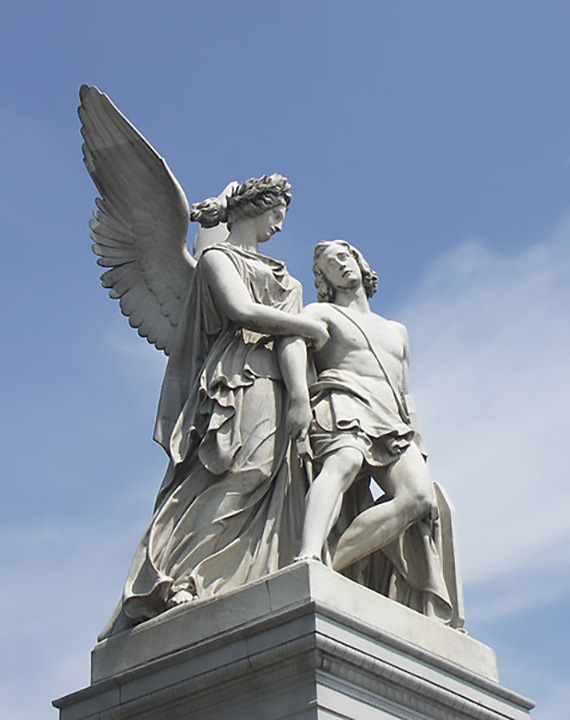
NIKE IN THE TITANOMACHY
Arguably the most famous tale of Nike in Greek mythology comes early in the story of Zeus; a time when Zeus was seeking to usurp the power of his father Cronus and the other Titans.
Zeus sent word out to all the deities calling for allies, with promises of honour and power for those who joined him, but those who opposed him would lose their positions and power.
Styx was the first goddess to side with Zeus, and the Oceanid brought with her, her four children, who Nike, Zelus, Bia and Cratus, who also willingly joined the forces of Mount Olympus.
During the subsequent war, the Titanomachy, Nike would act as the charioteer of Zeus, guiding controlling his horses and chariot through the battlefields. Of course, the goddess of Victory proved to be on the winning side, and Zeus took the mantle of supreme deity from his father.
The assistance given by Nike and her siblings would see them honour by a permanent residence on Mount Olympus near to Zeus, where the four acted as guardians of the very throne of Zeus.
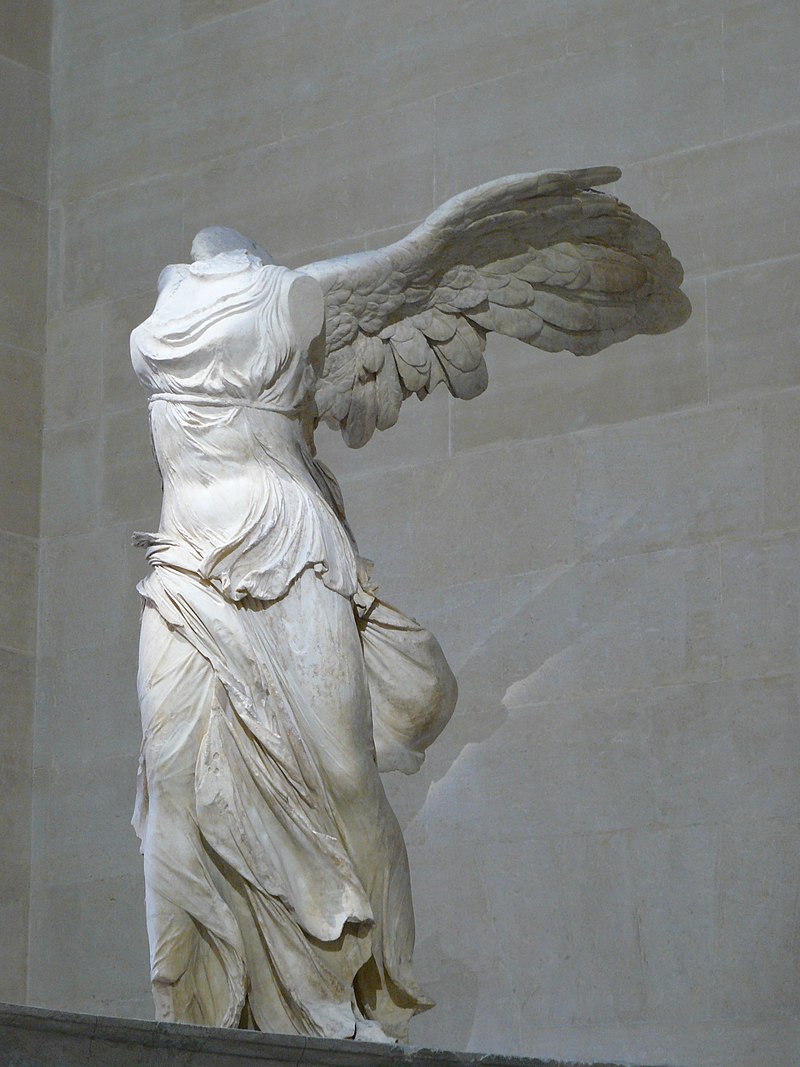
NIKE THE CHARIOTEER
Subsequently Nike would reprise her role as the charioteer of Zeus during the Gigantomachy, the war of the Giants, and also during the uprising of Typhon.
The uprising of Typhon would see the monstrous Typhon threaten the existence of Mount Olympus, and all the Greek gods and goddesses, bar Zeus and Nike, would flee from the threat. Nike would offer words of comfort to Zeus, and rally him in his fight with Typhon, and fight that Zeus would of course eventually win.
After the wars, Nike was often connected with Athena, the Greek goddess of wisdom and war strategy.
THE GODDESS NIKE IN ANTIQUITY AND TODAY
In antiquity, depictions of Nike abound, for the goddess was to be found on a wide range of coins, and in addition, statues to the goddess Nike were often constructed to commemorate victories in battles, as with the statue The Winged Nike of Samothrace. Even in the 20th century the use of Nike on statues continued for the Greek goddess was sculpted as part of the original Jules Rimet trophy for football’s world cup.
Today, the imagery of the goddess Nike, and her name live on. Obviously there is the sportswear brand named for Nike, but also many statues of Nike (in her Roman guise of Victoria) are still visible, including those on top of the Brandenburg Gate and the Arc de Triomphe du Carrousel.
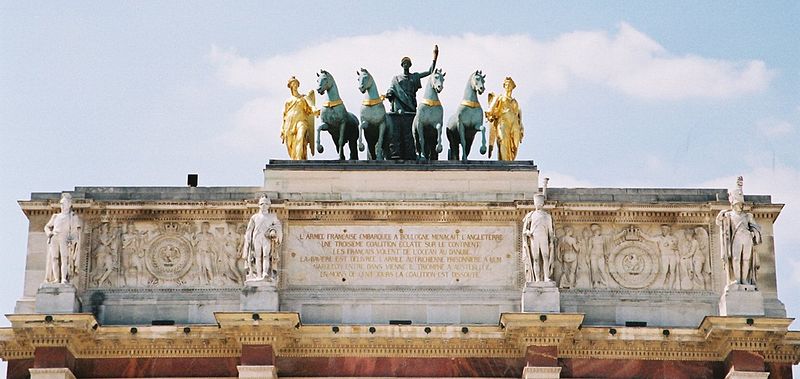
How Nike Relates to the Modern World
Regardless of whether it is 2017 or 250BC, mankind has equated success and triumph with being regarded as #1 in some pursuit whether it be a sport or in our career.
Since 1928, the Olympics Medal has sported Nike on the obverse side bearing her wreath of victory and the shield upon which the victor’s name is inscribed.
A portion of the hood ornament on all Rolls-Royce vehicles includes a depiction of Nike.
Honda motorcycles use a symbol of Nike as part of the company’s logo.
Nike has been the symbol used since 1945 by America’s Anti Aircraft Missile System.
Statues of her often include a lyre or kithara used to celebrate a victory with song and dance.
In keeping with Zeus’s promise to make Nike to live forever as the Goddess of speed, strength and victory, people of all ages have the opportunity to wear Nike shoes. As proof of the power of Nike, many sports stars maintain they owe their success to Nike shoes. Thirty per cent of sports footwear sales belong to Nike. For example, Michael Jordan is said to have made more money from his Nike endorsements than all of its manufacturing labor force.
Headquartered in Oregon, Nike has been the leader in the world of sports equipment and apparel since 1978 and is estimated to employ 44,000 workers around the globe. The name Nike was chosen by company founders because of her attributes of speed and victory.
For the swoosh symbol that appears on the side of each Nike shoe, Nike employee Carolyn Davis was paid $35 for the design. Rumor has it she later received an undisclosed amount of stock options as well.
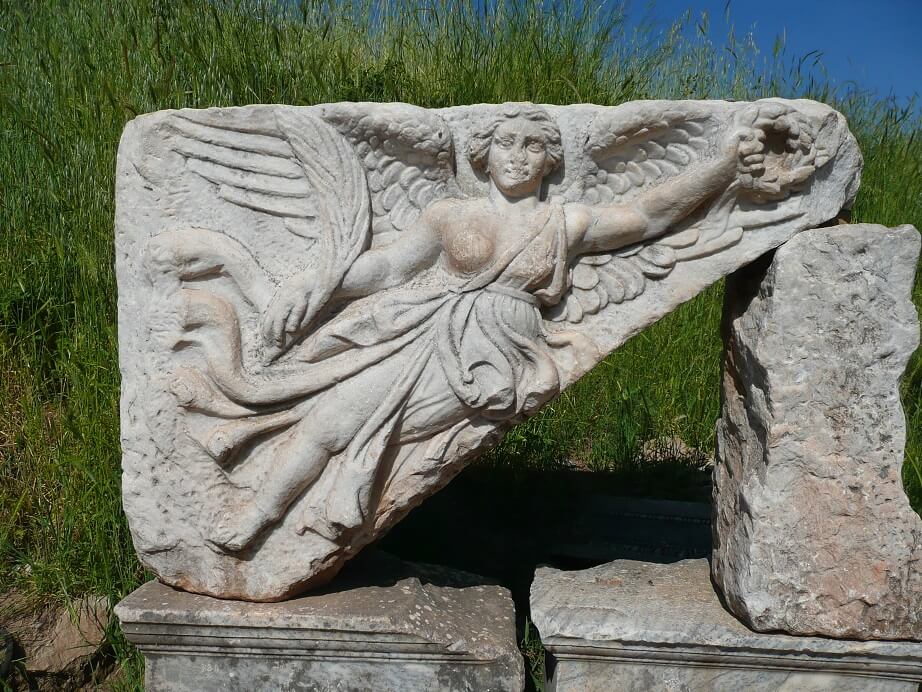
Sources
GREEK
Hesiod, Theogony - Greek Epic C8th - 7th B.C.
The Homeric Hymns - Greek Epic C8th - 4th B.C.
Pindar, Odes - Greek Lyric C5th B.C.
Greek Lyric III Simonides, Fragments - Greek Lyric C6th - 5th B.C.
Greek Lyric IV Bacchylides, Fragments - Greek Lyric C5th B.C.
Greek Elegaic Theognis, Fragments - Greek Elegaic C6th B.C.
Aristophanes, Birds - Greek Comedy C5th - 4th B.C.
Apollodorus, The Library - Greek Mythography C2nd A.D.
Pausanias, Description of Greece - Greek Travelogue C2nd A.D.
The Orphic Hymns - Greek Hymns C3rd B.C. - C2nd A.D.
Nonnus, Dionysiaca - Greek Epic C5th A.D.
ROMAN
Hyginus, Fabulae - Latin Mythography C2nd A.D.
Ovid, Metamorphoses - Latin Epic C1st B.C. - C1st A.D.
Cicero, De Natura Deorum - Latin Rhetoric C1st B.C.
BYZANTINE
Suidas, The Suda - Byzantine Greek Lexicon C10th A.D.
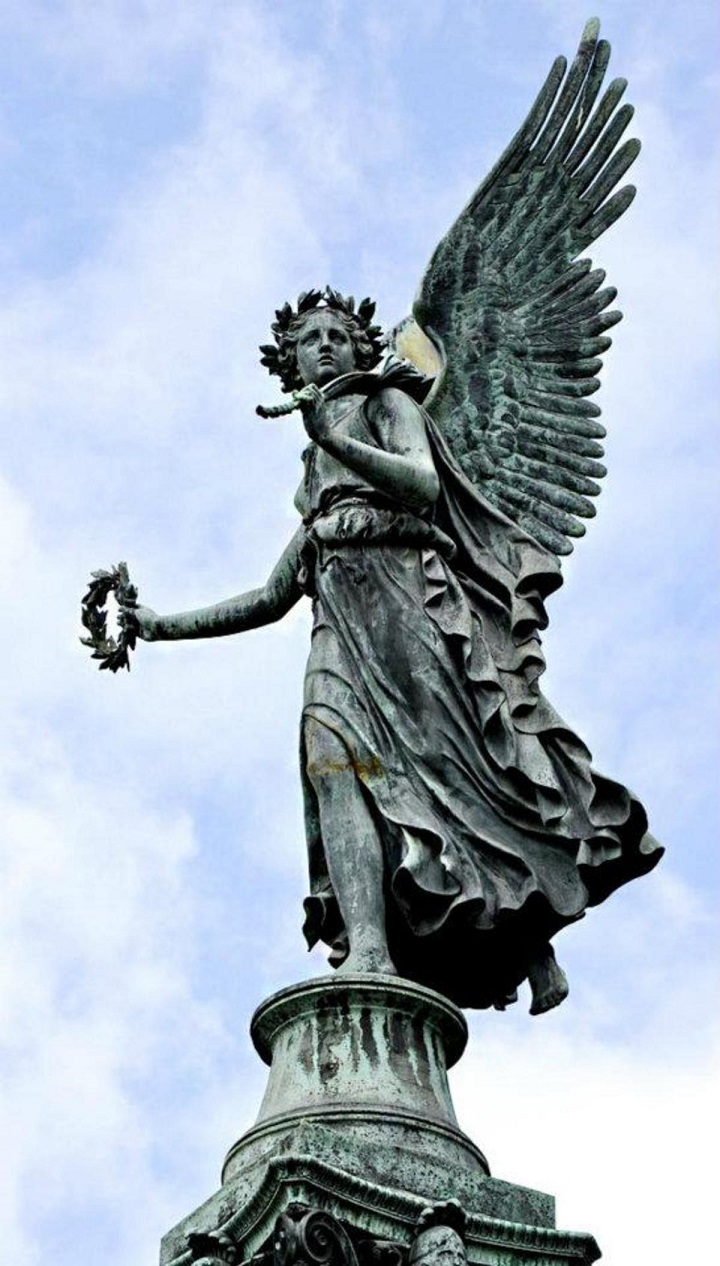
OTHER
Smith, William; A Dictionary of Greek and Roman Antiquities. William Smith, LLD. William Wayte. G. E. Marindin. Albemarle Street, London. John Murray. 1890.
"Greek Legends and Myths"
"Greek Gods & Goddesses"
"Theoi"
"Wikipedia"
Our Mobile Application
Check out Our Mobile Application "Ancient Greece Reloaded"


